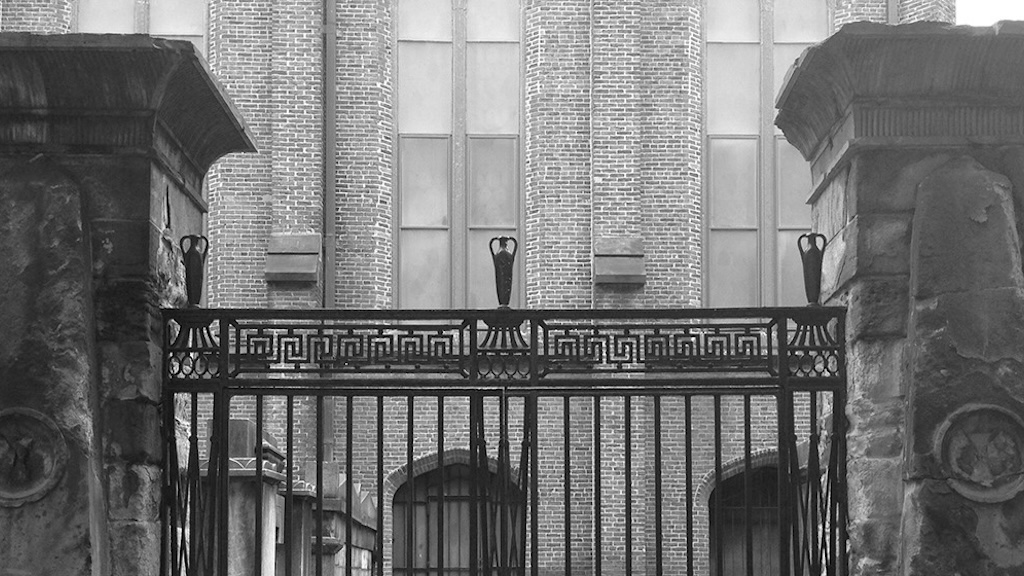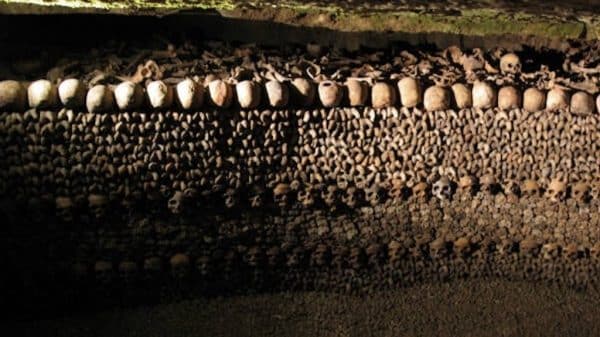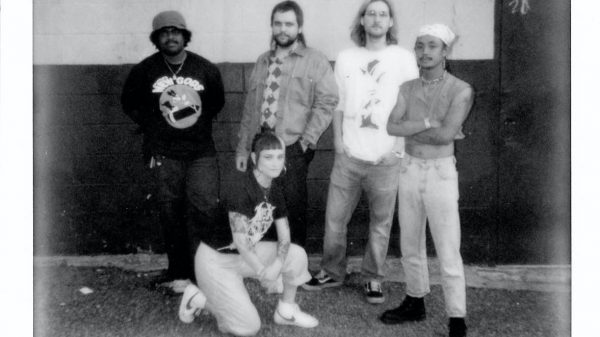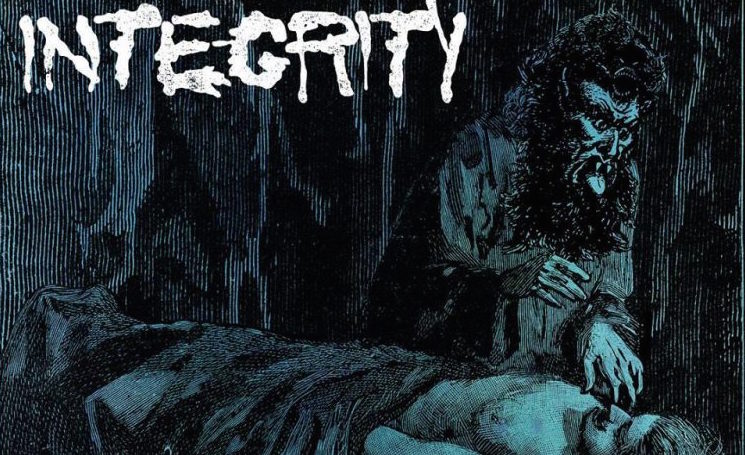Walking north along Baltimore’s Greene Street towards Lexington Market, just outside the grounds of the University of Maryland, you might come across an Egyptian Revival gateway leading to a small burial ground nestled in a dense urban area of Baltimore’s downtown. Peering through this gate, you may glimpse a few structures in line with this architecture, including obelisks and a masonry pyramid darting the grounds.

This site, Baltimore’s Westminster Burial Grounds, dates to the late 1780’s when a group of prominent Presbyterians purchased a plot of land at what was then the western edge of the city. Due to its location and age, Westminster is the final resting place of many prominent names in local history – most notably Edgar Allan Poe. Originally just a burial ground associated with a local parish, it was decided that the congregation should invest in building a church on the site just a few years after Poe’s internment. It seems that this style of dense Classical and Egyptian Revival graveyard was no longer in fashion, and the plan may have been an effort to protect the land within the expanding community. Since graves peppered the whole of the existing lot, piers were built between the headstones and crypts, forming a foundation for the church above existing plots. This created European-style catacombs underneath the structure, one of only a handful of intentional catacombs created in the US.



In some ways, the spirit of mystery borrowed from Poe’s writing is what brought this location to such a wide renown. From 1949-2009, a mysterious figure would arrive at the grounds in the early hours of January 19th to ceremoniously mark the birthday of the famed writer. Leaving cognac and roses at the burial site, the “Poe Toaster” became quite the media sensation, even being snapped for Life Magazine.


The Poe Toaster was often able to evade the crowds that began gathering as word of the annual event spread. Jeff Jerome, the former curator for Baltimore’s Poe House, is accepted as a long-time conspirator. Jerome himself claims ignorance of the identities of the men who originally carried out the tradition, but he often acted as their mouthpiece by reading notes left along with the yearly offerings.
It is believed the original Toaster died in 1998. The second Toaster was less reverent of the tradition, leaving notes that were more comical than mysterious. Some locals have posited that this Poe Toaster was David “Footlong” Franks, a poet, artist, and general Baltimore rabble-rouser. Franks is a hero of many barroom stories; he once bled from the forehead during a poetry reading after accidentally firing a blank-filled gun at his head instead of above it. Another often recounted Franks story is the time he had the aging Jorge Luis Borges sign his heart at a DC-area event, only to be thrown out to the embarrassment of the Argentine author, who called on him after his reading.

Franks passed away on January 14th of 2009. Five days later, the Poe Toaster neglected to appear on what would have been the 60th year of the ceremony. Groups continued to gather each year until 2011, when Jeff Jerome declared the mysterious tradition had reached its end. In 2016, the tradition was revived after an international casting call, producing a theatrical version of the ceremony on the closest weekend to Poe’s birthday. Though the tradition of the Poe Toaster lives on, the spirit seems to have died in the winter of 2009.










